Week 9: #52 Ancestors – At the Courthouse
By Eilene Lyon
Benjamin Franklin was the first postmaster general, appointed by the Second Continental Congress in 1775. Delivering mail has been a vital function of this quasi-governmental agency ever since. Thanks to the Postal Service, Americans could communicate inexpensively over long distances, facilitating population mobility before the age of the telegraph and telephone.
Free mail delivery in large cities began in 1863. Postal money orders were first offered in 1864. Parcel post was introduced in 1887 for international packages, but it took another 25 years before it was offered domestically. Rural free delivery (RFD) began in 1896.
In the early part of the 20th century, college students found it cheaper to mail their dirty laundry to mom than to wash it themselves. Can you just imagine moms opening those delightful packages? In 1914, the parents of 4-year-old Charlotte Pierstorff mailed her off to her grandparents in Idaho, an audacious act that resulted in a prohibition against mailing human beings.1
It’s probably safe to say that mail delivery is sometimes unpleasant and usually a thankless job. I have a cousin who is a rural carrier in South Dakota. As a contractor, she has to use her own vehicle. Judging by her Facebook photos, she has to deal with some nasty weather conditions at times. She exemplifies the unofficial creed “Neither snow nor rain nor heat nor gloom of night stays these couriers from the swift completion of their appointed rounds.”
My great-grandmother’s brother, Clifford Cutting, was a mail carrier in Oregon for over 30 years, first in Portland and later in Hood River. After he retired in 1939, rather than enjoying his new life of leisure, Clifford found himself in the U. S. District Court in Portland facing felony charges.
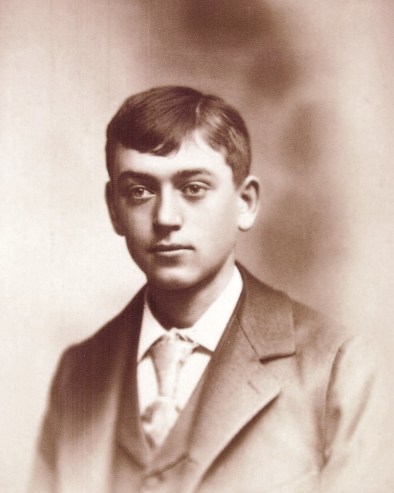
Clifford Granville Cutting was the second child and first son born to Arthur N. Cutting and Alice Adelia Fawcett, on August 5, 1882 in Dexter, Codington County, South Dakota.2 Earlier that same year, Arthur Cutting was appointed postmaster, which at the time was usually a political reward.3
Arthur purchased land in Beaverton, Oregon, in 1900 and the family (all except Mabel, the oldest child) moved west at that time.4 He and Alice settled in to a life of farming, and raising their two youngest sons, Ward and Harold.
Clifford married Carrie Jespersen in 1906, probably the same year he began working for the postal service, and they had three sons together: Roland, Arthur R., and Wendell.5 Sadly, Wendell died at the age of 15 in 1929.6 His grieving mother went to her grave in 1933.7 Three years later, Clifford married again to Mossielee Coleman, a plump, cheerful woman who had recently moved to Oregon from Los Angeles.8
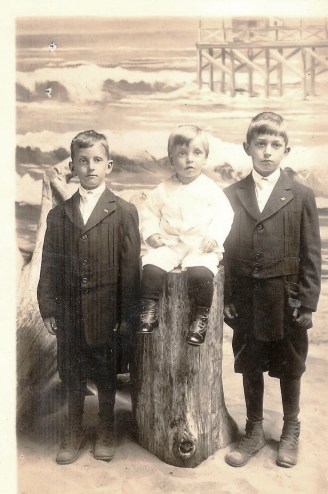
On August 26, 1939, Clifford’s oldest son, Roland, married Florence Montgomery in Seattle, Washington.9 A month later, police arrested Clifford for embezzling $7.11. He was confined to jail until his trial.10 In mid-October it was noted in the news that he had been referred to a probation officer.11 However, his hopes of avoiding prison were soon dashed.
On November 9, 1939, Clifford G. Cutting was convicted of converting the proceeds of a postal money order to his own use and Judge James Alger Fee sentenced him to serve a year and a day in the federal penitentiary at McNeil Island, Washington. He was taken directly to prison.12
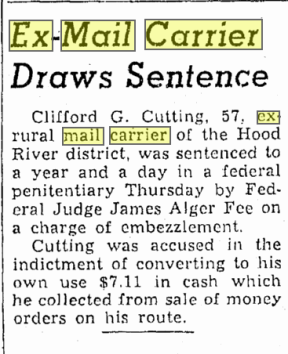
Prisoner number 14449, age 57, was 5 ft. 7 ¾ in. tall, 174 lbs., chest[nut]-grey haired, grey eyed with a medium build and medium complexion. He was incarcerated on November 10 and eligible for parole on March 9, 1940.13
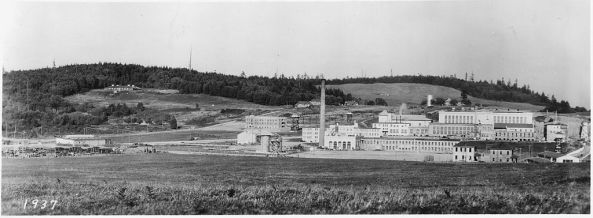
On April 17, 1940 Clifford was enumerated in the federal census at McNeil Island (which is how I first discovered this sad tale).14 Mossielee had left their home in Oregon and was enumerated that same month in Missouri, living next door to some people she probably knew from Hood River.15
Clifford was finally paroled on May 1, 1940.16 Did Mossielee return to Hood River? It’s hard to say. She did live in Hood River at the time of her death in 1960, but she was not buried in the same cemetery as Clifford.17 (Clifford is buried with first wife, Carrie, mother of his three children.)

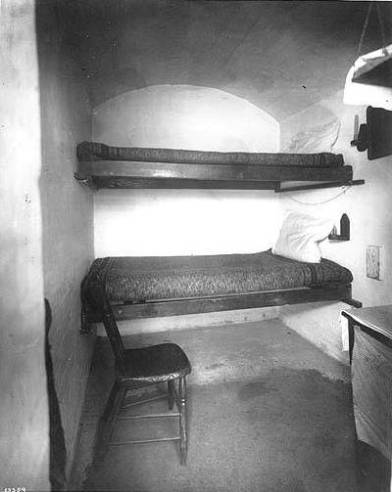
Undoubtedly, Clifford’s stay in the penitentiary was hard time. The conviction most certainly would have ruined his reputation in the community. McNeil Island, in the Puget Sound, opened as a territorial prison in 1875 and became a federal prison in 1904. There were some rough characters incarcerated there over the years including gangsters, Ku Klux Klan members, and Robert Stroud, who became known as the Birdman of Alcatraz. In the 1960s, Charles Manson was an inmate (before the infamous murders in California).18

Clifford Cutting lived only another year and half after his release from McNeil. He died in Underwood, Washington, a small community directly across the Columbia River from Hood River, on September 29, 1941, exactly two years to the day after his arrest.19
The story continues at Postal Crime Postscript.
Feature image: Gus J. Solomon Courthouse, Portland, Oregon. Completed in 1933. (Wikimedia Commons)
Clifford G. Cutting on Ancestry.
- All this wonderful trivia about the postal service can be found at https://en.wikipedia.org/wiki/United_States_Postal_Service ↩
- Clifford Granville Cutting. World War I draft registration. Registration State: Oregon; Registration County: Multnomah; Roll: 1852141; Draft Board: 04 – via Ancestry.com. ↩
- Arthur Cutting. Ancestry.com. U.S., Appointments of U. S. Postmasters, 1832-1971 [database on-line]. Provo, UT, USA: Ancestry.com Operations, Inc., 2010. ↩
- Deed from Karl Ulrich to Arthur N. Cutting. Washington County, Oregon, Deed Book 51, page 440. Recorded April 4, 1900. ↩
- Clifford G. Cutting and Carrie M. Jesperson. Multnomah Co., Oregon Marriage Index. Genealogical Forum of Oregon, Inc. http://gfo.org/resources/indexes/vital-records/multnomah-county-marriages.html : accessed 24 August 2014. ↩
- Wendell Wallace Cutting. Oregon State Library; Death Index 1921-1930 Begin-A; Reel Title: Oregon Death Index A-Z; Year Range: 1921-1930 – via Ancestry.com. ↩
- Carrie Cutting. Oregon State Library; Oregon Death Index 1931-1941; Reel Title: Oregon Death Index M-Z; Year Range: 1931-1941 – via Ancestry.com. ↩
- Clifford G. Cutting and Mosielee Coleman. Ancestry.com. Washington, Marriage Records, 1854-2013 [database on-line]. Provo, UT, USA: Ancestry.com Operations, Inc., 2012. ↩
- Wedding article in the Seattle Post-Intelligencer, August 30, 1939, quoted in The Montana Standard (Butte) on September 6, 1939. ↩
- Clifford G. Cutting. Record of Prisoners Received. United States Penitentiary. McNeil Island, Washington. National Archives, Seattle, WA. ↩
- “Slaughter Gets Three Years in Federal Prison.” The Capital Journal (Salem, OR), October 13, 1939, p. 7. Newspapers.com. ↩
- Record of Prisoners Received. ↩
- Ibid. ↩
- Clifford G. Cutting. Year: 1940; Census Place: Pierce, Washington; Roll: m-t0627-04356; Page: 10A; Enumeration District: 27-115 – via Ancestry.com. ↩
- Mossie Lee Cutting. Year: 1940; Census Place: Jackson, Webster, Missouri; Roll: m-t0627-02164; Page: 4B; Enumeration District: 113-10 – via Ancestry.com. ↩
- Record of Prisoners Received. ↩
- https://www.findagrave.com/memorial/51654055 ↩
- https://en.wikipedia.org/wiki/McNeil_Island_Corrections_Center ↩
- Clifford Granville Cutting. Ancestry.com. Washington, Select Death Certificates, 1907-1960 [database on-line]. Provo, UT, USA: Ancestry.com Operations, Inc., 2014. ↩

I was tempted to postpone this, because I have requested the case file from the National Archives and a copy of his death certificate. Once I have those, hopefully I can answer some nagging questions.
LikeLiked by 3 people
I can’t imagine having to be in prison, I’m sorry one of your relatives had to suffer this fate.
LikeLiked by 2 people
It seems like such a harsh punishment to me.
LikeLiked by 1 person
Yes, I thought so, too.
LikeLiked by 1 person
Wow a year’s prison sentence for $7. I wonder why he needed to take the money..do you think it was to help with his son’s wedding?
LikeLiked by 2 people
I hope to learn more from the case file, but it sounds like it could have happened any time during his career. The reports say the discrepancy was discovered after he retired.
LikeLiked by 2 people
ah, posties make a pretty good living now, but I wonder about back then. It would be interesting to find out the details!
LikeLiked by 1 person
A sad but good tale, well done on finding the facts. What would $7 from 1939 be worth today, I’ve done this recently based on UK inflation but can’t find a site for US inflation.
LikeLiked by 2 people
There is a site. I’ll have to check.
LikeLike
WOW–you find such amazing stories. What a real tragedy!
LikeLiked by 1 person
It really was. I look forward to learning the details.
LikeLiked by 1 person
Wow, genealogy certainly leads to some surprising episodes, doesn’t it!
LikeLiked by 1 person
My next story is eerily similar to this.
LikeLike
Did I read this right in that all of this was over $7.11????
LikeLiked by 1 person
Yes. A life ruined for seven bucks. I wonder how much the trial and incarceration cost the taxpayers?
LikeLiked by 1 person
I. Can’t. Even.
LikeLiked by 1 person
It’s been a long time since I got my law enforcement degree, but I think that all federal crimes are felonies, which by definition have a minimum sentence of a year plus one day. Because it involved the postal service, it was automatically a federal offense. That doesn’t preclude the option of probation, though.
LikeLiked by 1 person
I put that into a dollar inflation calculator and “$7.11 in 1939 is equivalent in purchasing power to $129.30 in 2019”. Not a great deal to go to prison for!
LikeLiked by 1 person
That’s about what I figured it would amount to. Not much!!
LikeLiked by 1 person
That made me very sad. $7 could have been the tip of the iceberg. If not it’s even sadder!
LikeLiked by 1 person
It will be interesting if I get ahold of the case file and see just what the prosecutor thought was going on.
LikeLiked by 1 person
I agree!
LikeLiked by 1 person
Very disproportionate sentencing… i would say!
LikeLiked by 1 person
So would I. But maybe that sort of punishment was the norm for the time.
LikeLike
How sad! Seems unreal no one would have thought the sentence might be a little harsh. But then I always have to wonder what future generations will say about some of the things we do!
LikeLike
I had never heard of mailing a human. I know today’s postal carriers usually don’t like it when they have to deliver us a live queen bee 🐝
LikeLiked by 1 person
LOL I imagine not.
LikeLike